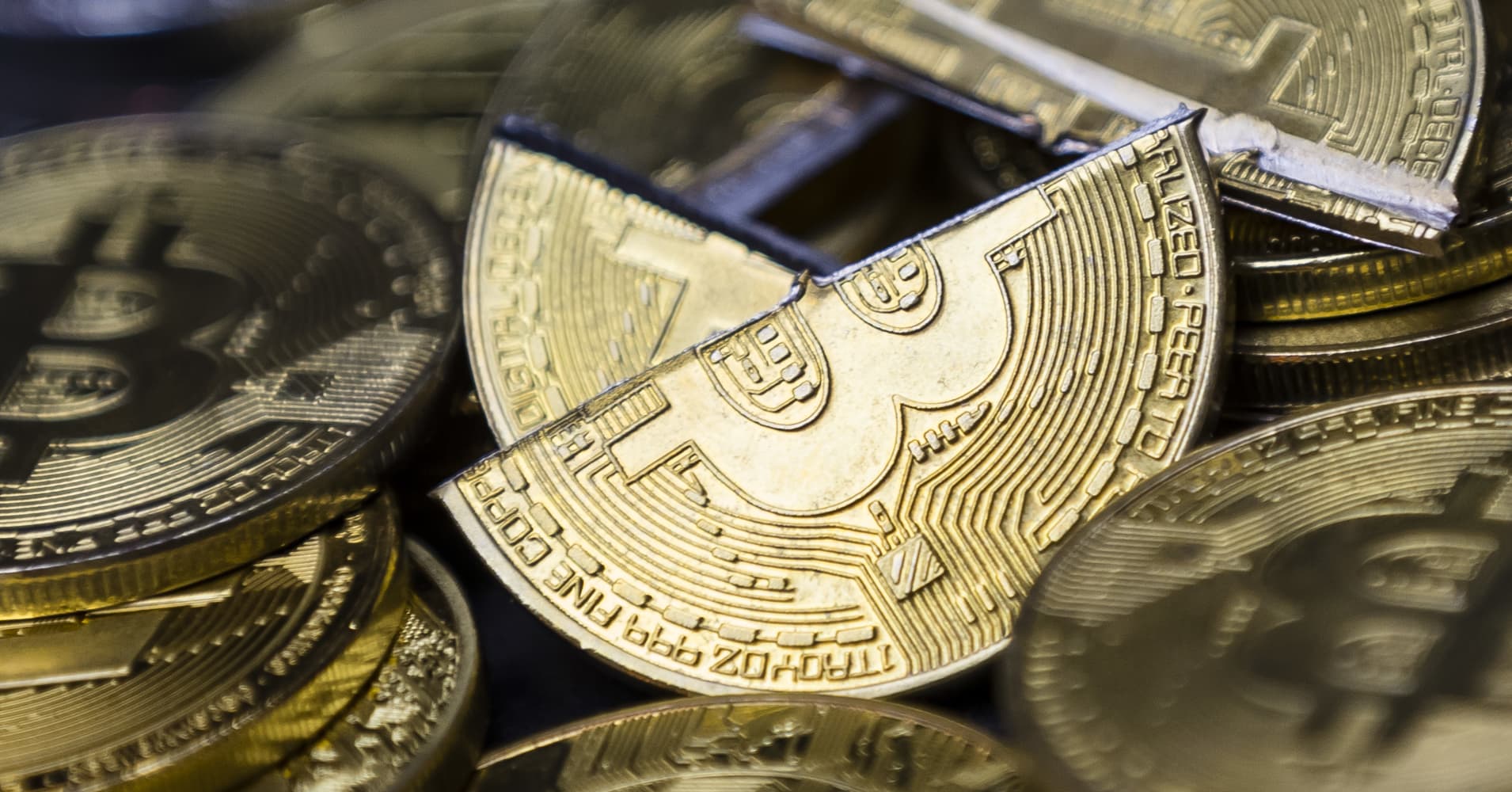
Bitcoin's role as a "safe haven" asset in turbulent times is looking more unlikely.
As the U.S. stock market saw its biggest drop since February on Wednesday, the largest digital currency dropped 6 percent along with it. Bitcoin, sometimes referred to as "digital gold," and other top cryptocurrencies wiped out $13 billion of value in a matter of hours, according to data from CoinMarketCap.com.
Other top cryptocurrencies followed bitcoin's lead, with XRP and ethereum both tumbling more than 10 percent. The downward moves came after the International Monetary Fund warned that cryptocurrencies "could create new vulnerabilities in the international financial system."
Bitcoin proponents have billed it as a store of value, or "digital gold," and a possible replacement for traditional currencies.
This week's market plunge, and this year's global turmoil, should have made ideal conditions for digital currencies to prove that. The Dow Jones Industrial Average closed more than 800 points lower Wednesday, its biggest loss since February, hurt by quickly rising interest rates and a rout in tech stocks.
While U.S. stock market has otherwise fared pretty well this year, government-backed currencies were dragged down by ongoing Brexit concerns in 2018, and there were growing trade tensions between the U.S., China and European Union.
Yet, the world's largest cryptocurrency is down 55 percent since the beginning of this year and more than 67 percent since nearing the $20,000 mark in December. Regulatory crackdowns and news of hacks on global exchanges contributed to those declines.
Bitcoin's failure to make a comeback amidst the global turmoil has been a warning sign for one researcher. In a new report this week, U.K.-based Juniper highlighted bitcoin's inability to rally as a hint of more bad news to come.
"If Bitcoin cannot make gains in such favourable circumstances, then it is unlikely to prosper as and when these issues are resolved," Juniper researcher Windsor Holden said in the study published Tuesday. "We feel that the industry is on the brink of an implosion."
For those not as bullish on digital gold, real gold hasn't proved to be a much better option this year. The precious metal had fallen about 13 percent since hitting a peak in April, with investors relying on the safety of the U.S. dollar as a trade war with China unfolded, against a backdrop of rising U.S. interest rates. But gold has recovered from a low hit in mid-August, spurred by concerns over economic growth and inflationary pressure from soaring oil prices.
U.S. gold futures saw slight bump after the market collapsed, up 1.1 percent Thursday morning and about 0.5 percent higher for the week.
via IFTTT
No comments:
Post a Comment